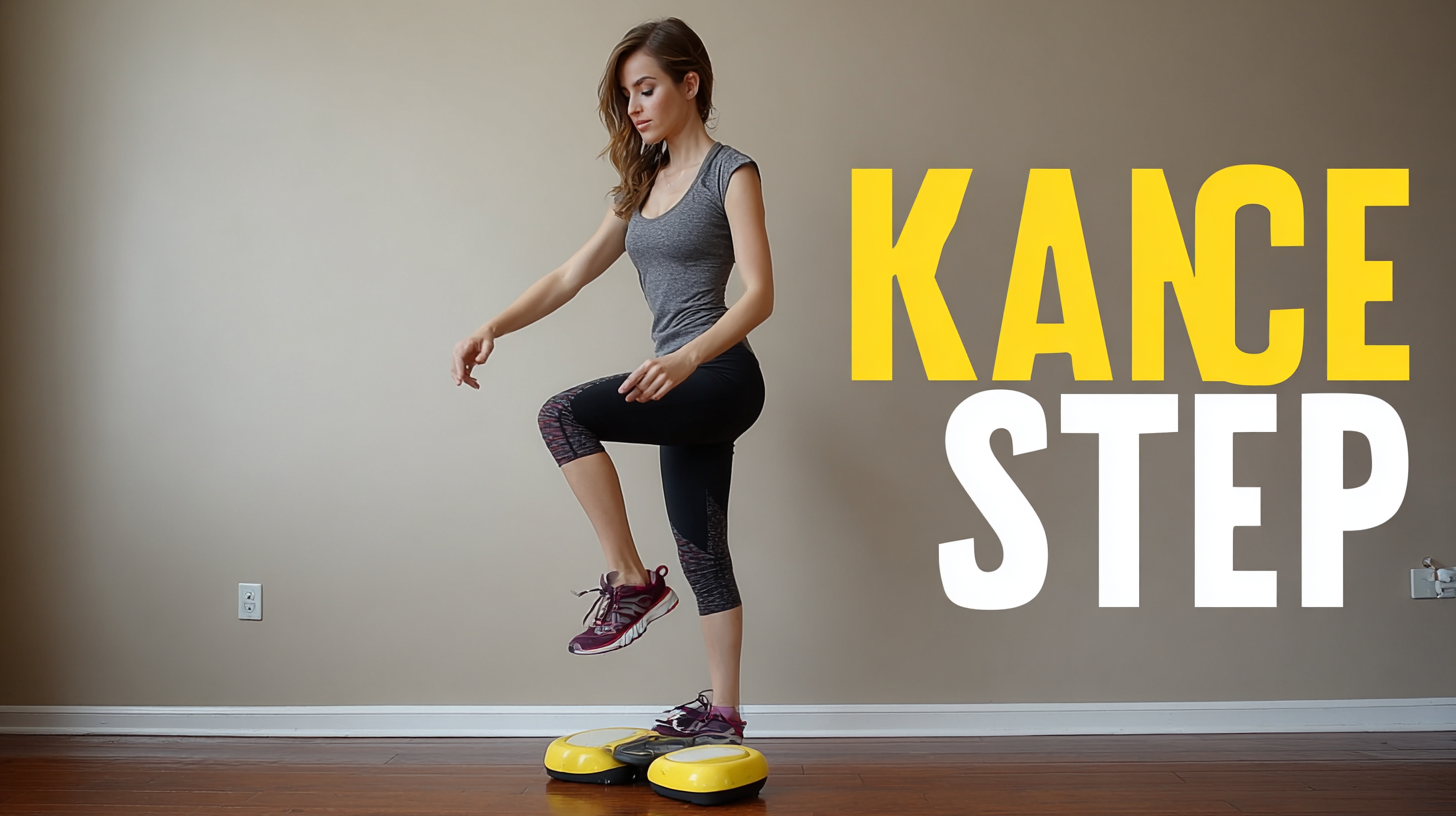Issues with Best Balance From Aerobic Step That You Should Be Aware Of
When engaging in fitness activities, the Balance From Aerobic Step remains a popular choice among enthusiasts seeking to enhance their cardio routines while incorporating balance and strength training. A recent industry report by The International Health, Racquet & Sportsclub Association (IHRSA) highlights that group exercise participation has surged by over 30% in the past few years, signaling a growing interest in versatile workout tools like the aerobic step. However, while its benefits are well-documented, including improved coordination and lower body strength, users must also be aware of potential issues that can arise during workouts. Notably, improper usage can lead to injuries or ineffective training outcomes, underscoring the importance of understanding the best practices for utilizing the Balance From Aerobic Step effectively. This blog aims to explore these issues and share essential strategies to maximize your aerobic stepping experience safely and efficiently.

Common Mistakes When Using Aerobic Steps for Balance Training
When utilizing aerobic steps for balance training, it's crucial to avoid common mistakes that can hinder progress and increase the risk of injury. One prevalent issue is the improper adjustment of step height. A report from the American Council on Exercise (ACE) indicates that using a step that's either too high or too low can lead to ineffective workouts and strain on the joints. Ideal step height varies based on individual fitness levels and goals, with many experts recommending adjustments that align with the user’s capabilities and experience.
Another common mistake is neglecting proper form and technique during exercises. Studies published in the Journal of Physical Activity and Health emphasize that using incorrect postures, such as leaning too far forward or bending at the knees excessively, not only diminishes the training effect but can also cause significant injuries. Proper guidance and familiarization with effective techniques can enhance the benefits of aerobic step training, fostering improved stability and coordination. Therefore, investing time in learning safe and efficient techniques is essential for maximizing the effectiveness of balance training with aerobic steps.
Issues with Best Balance From Aerobic Step That You Should Be Aware Of - Common Mistakes When Using Aerobic Steps for Balance Training
| Issue | Common Mistake | Impact on Training | Suggested Solution |
|---|---|---|---|
| Incorrect Step Height | Using too high/low of a step | Increased risk of injury and poor balance | Adjust step height according to fitness level |
| Poor Foot Placement | Not placing whole foot on step | Loss of balance and stability | Ensure foot is fully placed on the step |
| Lack of Core Engagement | Not activating core muscles | Weak balance and posture | Focus on engaging core throughout the exercise |
| Inconsistent Rhythm | Changing pace during exercises | Impaired coordination and balance | Maintain a steady rhythm and pace |
| Ignoring Body Alignment | Not maintaining proper alignment | Risk of strain or injury | Focus on maintaining correct body alignment |
Understanding the Science Behind Aerobic Steps and Balance Improvement
 When it comes to aerobic steps, understanding the science behind their impact on balance improvement is crucial. Aerobic step exercises are designed to increase heart rate while also engaging muscles used for stability and coordination. The repetitive nature of stepping up and down challenges the body’s proprioception, which is the sense of body positioning and movement. This enhanced proprioceptive feedback can lead to better balance, especially in older adults or those recovering from injuries.
When it comes to aerobic steps, understanding the science behind their impact on balance improvement is crucial. Aerobic step exercises are designed to increase heart rate while also engaging muscles used for stability and coordination. The repetitive nature of stepping up and down challenges the body’s proprioception, which is the sense of body positioning and movement. This enhanced proprioceptive feedback can lead to better balance, especially in older adults or those recovering from injuries.
Moreover, aerobic steps often incorporate variations in movement—such as lateral stepping or changing direction—which further stimulates the vestibular system and promotes dynamic balance. Research supports that integrating these types of exercises into a regular fitness routine not only improves balance but also enhances overall functional strength. As individuals gain confidence in their stability, they may find it easier to perform daily activities, reducing the risk of falls and injuries. Understanding these underlying mechanisms helps practitioners design more effective training programs that prioritize balance alongside cardiovascular health.
Tips for Selecting the Right Aerobic Step for Your Needs
When selecting the right aerobic step for your fitness needs, there are several key factors to consider. According to recent studies, the effectiveness of aerobic step workouts can significantly impact your overall fitness, helping to improve cardiovascular health while burning calories efficiently. Assessing the optimal height is essential, as adjustable aerobic steps that can transition between 4-inch, 6-inch, and 8-inch heights cater to various fitness levels, making them a versatile choice for both beginners and more experienced users.
Another important aspect is the material and stability of the step. A well-constructed aerobic step made from durable materials not only enhances safety during workouts but also contributes to better performance outcomes. Research indicates that consistent use of aerobic steps can lead to substantial improvements in lower body strength and coordination, crucial elements that benefit everyday physical activities. Additionally, incorporating this equipment into your routine can help sustain long-term weight management, aligning with findings that daily movement adjustments play a vital role in overall health.
Common Issues and Considerations for Selecting an Aerobic Step
This bar chart illustrates common issues and considerations for selecting an aerobic step. User satisfaction ratings inform potential buyers of what to look for in terms of stability, durability, adjustability, non-slip surface, and weight capacity.
Potential Injuries from Improper Use of Aerobic Steps
Using aerobic steps can greatly enhance your workout routine, but improper use can lead to a variety of potential injuries. One of the most common injuries associated with aerobic step use is ankle sprains. When stepping up or down without proper form or balance, the foot can easily roll, leading to stretches or tears in the ligaments. To minimize this risk, it is essential to maintain a stable base, ensure the aerobic step is securely positioned, and avoid sudden movements.
Another concern is knee injuries, which often arise from overexertion or incorrect alignment during exercises. When performing jumps or quick lateral movements, if the knees are not aligned properly with the feet, it can place undue stress on the joints and lead to conditions such as patellar tendinitis or even more severe injuries like ligament tears. It’s crucial to focus on technique, keeping the knees aligned with the toes and landing softly during exercises, to prevent these types of injuries. Awareness of these risks can help users maintain a safe and effective workout routine.
How to Create a Balanced Workout Routine Incorporating Aerobic Steps
Creating a balanced workout routine that incorporates
aerobic steps can significantly enhance
your fitness journey. To achieve this balance, it's important to integrate various types of exercises
that target different muscle groups while also promoting cardiovascular health. Start by incorporating
a mix of aerobic step routines with strength training, flexibility exercises, and
rest days. For instance, you might dedicate certain days of the week to high-intensity step workouts,
followed by lower-impact days focusing on strength and flexibility through yoga
or pilates.
Another key element is to ensure you are varying the intensity and duration of your aerobic step sessions.
This not only keeps your workouts engaging but also helps prevent plateaus. For a balanced routine,
consider alternating between shorter, high-intensity step sessions and longer, moderate-intensity sessions.
Additionally, integrating interval training
with your aerobic steps can maximize fat burn and enhance endurance. Always listen to your body and adjust
your routine as needed to avoid overtraining and to promote continuous improvement.

